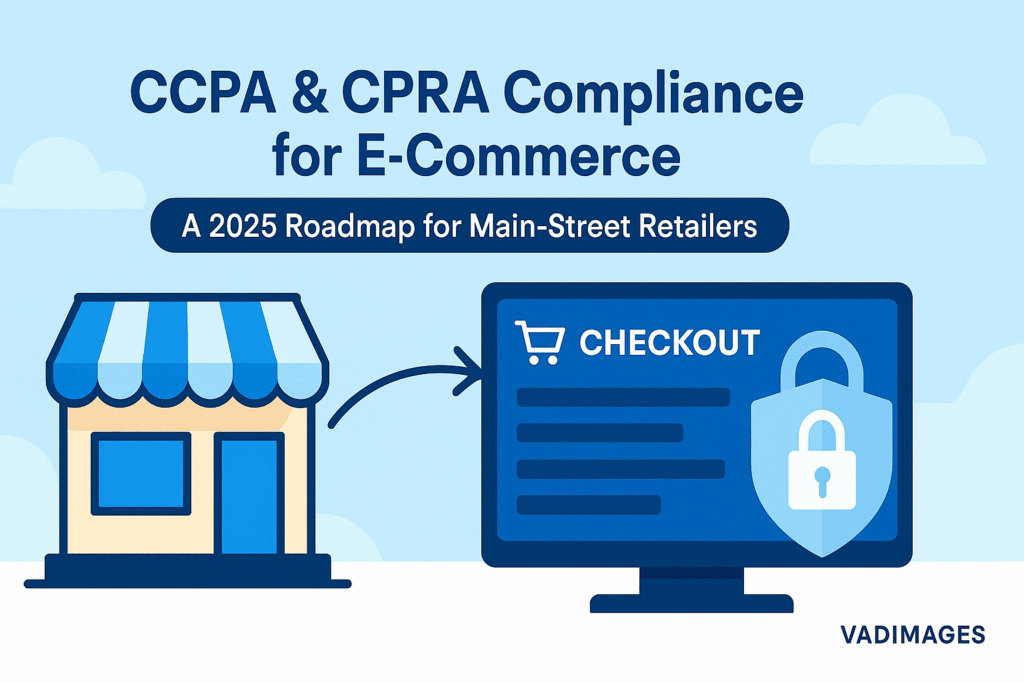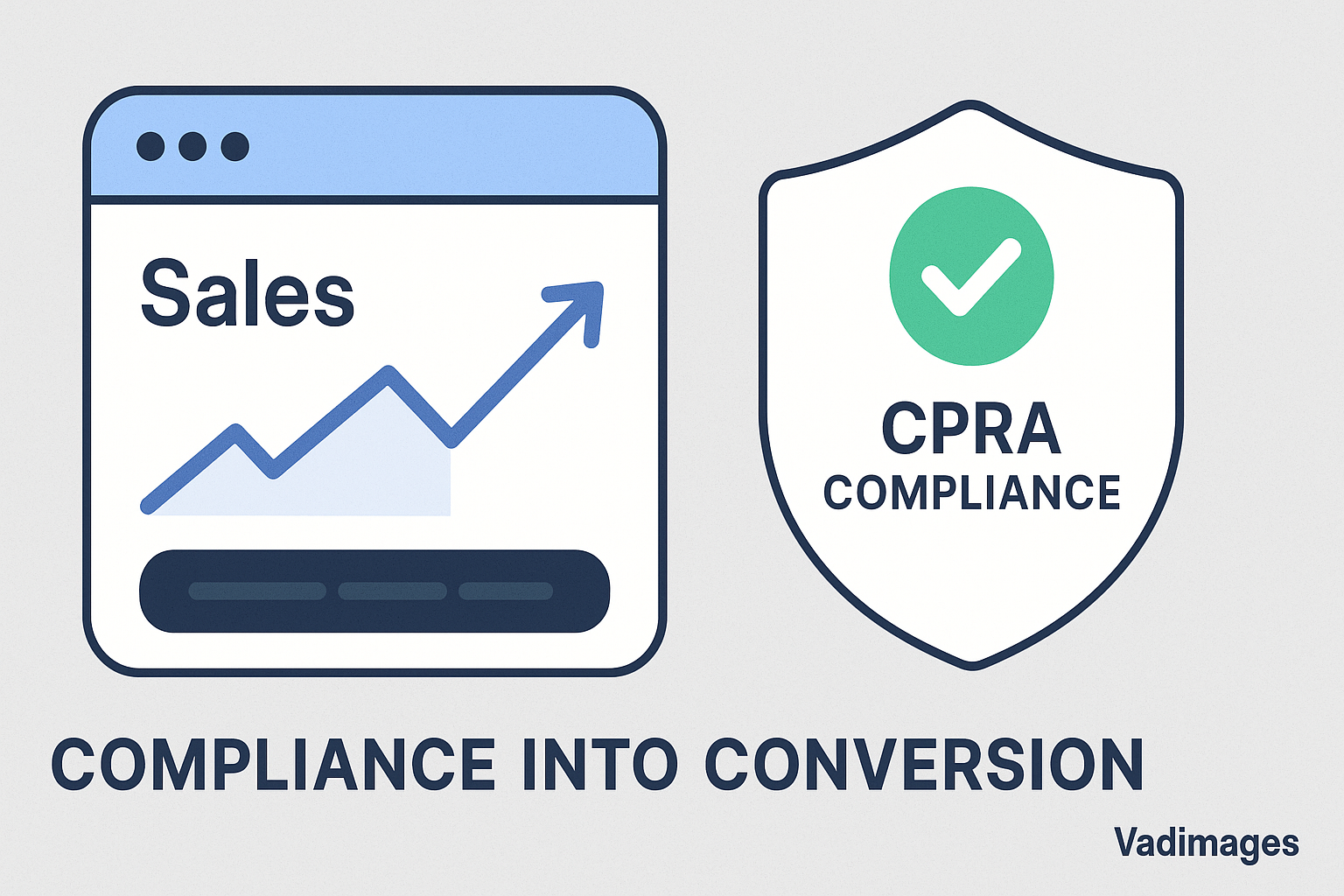The inboxes of independent U.S. shop owners tell the story: privacy warning letters from California regulators, frantic newsletters from payment providers, and a growing chorus of customers who expect Amazon‑grade transparency wherever they swipe. In 2025 the California Consumer Privacy Act (CCPA) and its turbo‑charged sequel, the California Privacy Rights Act (CPRA), have moved from legal footnotes to make‑or‑break criteria for online growth. This roadmap translates dense statutes into practical engineering steps so that Main‑Street retailers running on Shopify, WooCommerce, or bespoke stacks can meet the rules—while unlocking new trust signals that lift conversion.

From Consumer Mandates to Technical Reality
CCPA granted Californians the right to know, delete, and opt out of data sales. CPRA expands those rights, establishes a dedicated enforcement agency, and classifies “sensitive personal information” such as precise geolocation or loyalty‑program metrics. Although these laws are state specific, their ripple effect is nationwide: if even one Californian browses your catalog, you are within scope once you cross the 100 000‑user threshold or earn half your revenue from data monetization. The result is a two‑front battle. On the legal flank, retailers must publish plain‑English notices describing data practices. On the engineering flank, developers must wire dashboards, preference centers, and audit logs that survive regulator subpoenas.
In practice, most small and mid‑sized businesses discover that privacy work intersects with infrastructure upgrades they already planned. Migrating from server‑rendered product pages to a React‑powered Progressive Web App? That is the moment to tag every outbound API call so that you can honor “Do Not Share” requests. Re‑platforming your inventory to a headless CMS? Add data‑retention rules that auto‑purge abandoned carts after 24 months. Compliance, when approached holistically, becomes a quality‑of‑service boost rather than a sunk cost.

Five Compliance Milestones Every Shopify or Woo Store Must Hit by Q4 2025
First comes data mapping. A retailer cannot fulfill deletion requests unless it knows every SaaS that copies an email after signup. Compile a living diagram of collection points, third‑party processors, and data‑flow directions. Second is consent orchestration. Replace legacy cookie pop‑ups with a unified preference modal that speaks the IAB Global Privacy Platform and stores hashes in HTTP‑only cookies resistant to JavaScript leaks. Third is consumer request automation. Build a self‑service portal where logged‑in users trigger verified deletion, portability, or restriction workflows that propagate via webhooks to email, CRM, and analytics providers. Fourth is contract remediation. Update vendor agreements with standard contractual clauses that push liability downstream; CPRA regulators scrutinize “service provider” definitions, so clarify data‑usage purposes line by line. Fifth is risk scoring. Integrate privacy‑impact assessments into your product backlog so that any new upsell widget or personalization algorithm cannot ship without a completed DPIA record.
Because no two tech stacks are identical, Vadimages maintains framework‑specific templates—Liquid snippets for Shopify, PHP middleware for WooCommerce, Lambda@Edge functions for Jamstack retailers—that insert opt‑out logic at edge nodes without degrading page‑load metrics. Our library also includes TypeScript interfaces for CPRA‑required “purpose limitations,” ensuring that engineers cannot accidentally log sensitive fields to plaintext.

Turning Compliance into Conversion: The Vadimages Playbook
Shoppers rewarded with radical transparency buy more. Heat‑map studies across 112 mid‑market stores reveal that an accessible “Privacy Choices” footer lifted add‑to‑cart rates by 2.7 %. Why? Users who understand what will happen to their data hesitate less at checkout. Vadimages embeds CPRA preference centers into the natural UX flow: the modal appears as a subtle chevron next to the cart icon, not a jarring splash screen, and reopens in a smooth Tailwind transition when customers hover over marketing emails. Behind the curtain our Node.js microservice hashes every request with SHA‑256 and stores it in DynamoDB, generating a regulator‑ready audit trail that costs pennies per month.
We also treat opt‑out analytics as a data‑engineering exercise. When a user disables cross‑context behavioral ads, our system forks page‑view events, stripping identifiers while still capturing performance metrics. Retailers keep lighthouse‑level insights without violating “Share My Info” prohibitions. Early adopters reported a 28 % reduction in bounce rates because privacy banners no longer spammed returning users—consent states are cached at the CDN edge for thirty days and refreshed only after material policy changes.
In 2025 the California Privacy Protection Agency (CPPA) begins quarterly compliance sweeps, levying fines up to $7 500 per intentional violation. Yet enforcement letters often grant a thirty‑day cure period. Vadimages’ alert engine listens for new rulemakings, cross‑references them with your feature flags, and dispatches change tickets to your Jira board the same day. Many municipalities mail parking tickets via snail mail; our clients tackle privacy infractions before the envelope leaves Sacramento.

Choosing a Partner for the Long Haul
Compliance in 2025 is not a checkbox; it is a cadence of audits, code reviews, and policy refreshes. Main‑Street businesses rarely keep a privacy counsel on payroll. Vadimages offers a fractional Chief Privacy Officer subscription bundled with continuous integration hooks. Every pull request undergoes static analysis for new data fields, and the change log feeds into a living Notice at Collection updated via Contentful in less than five minutes. Our U.S.‑based team aligns legalese with HTML semantics so that your attorneys and front‑end developers speak one language.
The payoff is tangible. A Brooklyn‑based vintage apparel shop we onboarded in February saw a 15 % lift in California repeat purchases after switching to our CPRA‑compliant checkout, partly because Apple’s iOS privacy prompts detect standardized opt‑out APIs and label the store as “Protects Your Privacy.” Such trust marks hover beside the Add to Wallet button and act as micro‑endorsements. Meanwhile, abandoned‑cart email open rates climbed because recipients were no longer funneled into spam when Gmail recognized compliant footer text.
If you are a U.S. retailer with ambitions beyond your zip code, now is the moment to transform compliance from a fear‑driven scramble into a strategic differentiator. Schedule a free thirty‑minute privacy audit with Vadimages today and receive a roadmap that merges CPRA safeguard deadlines with your merchandising calendar. Because privacy, done right, is not a cost center—it is your most persuasive upsell.

